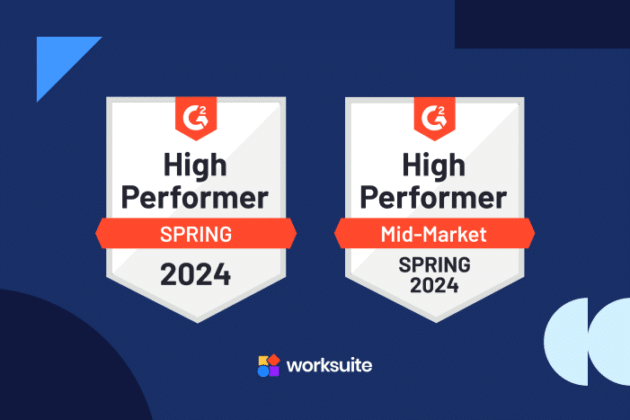
The New Flex Team: How to Build Scalable Global Teams


Traditional work models can’t keep up with the modern-day challenge of fluctuating workloads. Fortunately, the world’s top companies have adopted an innovative solution: the “Flex Team.”
This emerging concept (championed by forward-thinking businesses worldwide) represents a transformative shift towards building efficient teams. Flex Teams incorporate globally distributed freelance groups that help businesses achieve diversity, flexibility, accessibility, and scalability without risky upfront investments in hiring and onboarding full-time employees.
The future of work isn’t just about where we work—it’s how we work together.
“Make freelancers not feel like freelancers,” says Becca Breslin, Global Creative and Strategy Director at Stanley Black & Decker, Inc. “[Freelancers] are an extension of our team. We like to say…there’s no in-house or out-of-house—these are great, unique talent levers that we get to pull when needed.”
That’s the heart of Flex Teams. They combine part-time, freelance, and contract workers who can accomplish unbelievable (and quality) deliverables by working together.
New to the concept of Flex Teams? You’re not alone. We’ll cover everything you need to know about flexible teams, why you need them, and how to build impactful ones at your business.
Modern Challenges with Fluctuating Workloads
Depending on your industry, workloads can fluctuate widely due to seasonal demands, project cycles, or unforeseen events. This variability makes it very difficult for businesses to balance their staffing needs. Think: The short-staffed month of August when everyone takes vacation at the same time, or the ramp-up before a major launch.
Inefficiencies in Fixed Staffing Models
In periods of lower activity, companies with fixed staffing models may have excess human resources. This can strain company finances and can lead to a lack of engagement among team members who feel under-utilized.
Conversely, during spikes in demand or major project rollouts, the same companies might find themselves under-resourced. This can lead to rushed hiring processes and poor fits for the team or the task at hand. The stress of being overworked can affect employee satisfaction and retention and compromise the quality of work and customer satisfaction.
Tldr: Hire too many full-time employees, and you’ll lack the work during dry spells to justify the expense. Hire too few workers, and you won’t have enough resources to handle spikes in workload.
The High Cost of Scaling Up and Down
Scaling a workforce up or down to match fluctuating workloads is time-consuming and costly. Recruitment, onboarding, training, and the eventual offboarding of employees require significant investment in time and resources.
Opportunity Costs and Lost Flexibility
Relying on a static team size also means missing out on opportunities for innovation and flexibility. Companies may be unable to pursue new projects because their hands are tied by workforce constraints.
What Is a Flex Team?
A Flex Team (also known as a flexible team) is a dynamic, scalable group of professionals assembled to work on projects. These teams aren’t confined by traditional employment models or geographical boundaries, allowing businesses to tap into a global talent pool to find the best fits for specific projects.
Flex Teams consist of freelancers, contractors, and sometimes part-time employees who bring specialized skills. Unlike traditional teams, Flex Teams can rapidly expand or contract in size based on the business’s current needs. This ensures you always have the resources to meet demands without constantly overcommitting.
Hear what Kellie Jeswald, the Global Lead for Project Management & Studio Operations at Bloomberg, has to say:
“We have another model—we’re calling it our flex team—where we engage directly with vendors who either have people staffed full time or they offer us a pool of people to help with those flex needs. Work peaks and valleys and you really can’t staff appropriately because you never know what’s coming, but having the contacts and the vendors set up in the system and ready to go helps when you hit those bottlenecks…we already have them onboarded to the brand—they’re fully capable and ready to work. Now, they’re just an extension of our team.”
Work peaks and valleys, and you really can’t staff appropriately because you never know what’s coming. But having the contacts and the vendors set up in the system and ready to go helps when you hit those bottlenecks…”
Scaling Worldwide
One of the primary highlights of Flex Teams is their global nature. Your company isn’t limited to hiring talent in its immediate geographical area—it can hire regardless of where the talent lives in the world. A global talent pool enhances work quality and brings diverse perspectives to projects.
Flex Teams allow your business to respond quickly to market changes, project demands, and innovation opportunities. Additionally, whether scaling up to tackle a new project or scaling down after its completion, Flex Teams enable your company to make workforce adjustments without the overheads associated with traditional hiring or layoffs.
The Benefits of Flexible Teams
Flexible teams transform how your business approaches project management, talent acquisition, and overall workforce dynamics. Here are just a few of the advantages of adopting Flex Teams into your business strategy:
- Cost Efficiency: This model eliminates the financial strain of maintaining a sizeable full-time staff during periods of low activity, ensuring that financial resources are allocated efficiently.
- Access to Specialized Talent: Companies can tap into a global pool of freelancers and specialists to find skills needed for specific projects.
- Increased Agility and Scalability: The ability to quickly scale teams up or down allows businesses to respond to market changes, demand fluctuations, and new opportunities.
- Enhanced Productivity: Flexible teams are often more productive than traditional teams because members focus on specific tasks matching their skills and interests.
- Work-Life Balance for Team Members: Flexibility in work arrangements can improve team members’ work-life balance, resulting in higher job satisfaction and loyalty.
- Reduced Time to Market: Companies can quickly assemble and disassemble teams around specific projects to reduce development cycle for new products or services.
- Risk Mitigation: A flexible workforce lets you more easily adjust to economic downturns or shifts in demand without the complex process of downsizing a permanent workforce.
How to Manage Flex Teams
Successfully managing Flex Teams requires a nuanced approach to leadership, communication, and technology. With the right best practices and platforms, your organization can maximize the productivity and satisfaction of its workforce while meeting project goals.
Here’s how:
1. Leverage Technology for Collaboration
Systems and tools (like Worksuite) optimize everything from project management to task tracking and document sharing. It’s a one-stop shop for taking a project from start to completion.
No more bouncing between your Dropbox, email, and Slack channels. Store all your communications, deadlines, files, and invoices in one place.
2. Streamline Hiring and Onboarding
Worksuite simplifies the process of using freelancers by facilitating compliant talent pool engagements.
“If we like your work, we’re going to want to work with you again,” says Mandy Johnson, the Production Services Director at Jack Morton Worldwide.
Accelerating (and optimizing) this process speeds up your team assembly and brings new members up to speed on your company’s approach.
3. Establish Clear Communication and Expectations
Regular, clear communication helps every team member understand the project’s goals, individual responsibilities, and deadlines. Consistent check-ins and updates foster a culture of openness and feedback.
“It’s hardly ever a ‘one-and-done’ deal,” says Johnson. “We’re not just building a product or an event for our clients; we’re building relationships. The same goes for freelancer relationships.”
4. Provide Flexibility with Accountability
Trusting team members with the autonomy to manage their tasks demonstrates confidence in their abilities. However, establishing clear metrics for performance and deliverables is equally important.
This ensures team members are accountable for their contributions while providing the structure needed to achieve their best work.
5. Protect Your Team
Your Flex Team is your company’s intellectual property (IP)—don’t give competitors an opportunity to poach it. Platforms like Worksuite shield your team from the public eye and keep your projects and engagement confidential. This keeps your talent pool exclusive and opens up better opportunities for re-engagement.
“We recognize that freelancers are only with us as long as they want to be,” says Johnson. “It’s important to make their experience a great one, so they want to work with us again on any future projects for which they would be a good fit.”
Build Top-Notch Flex Teams with Worksuite
Flex Teams represent a pivotal shift in how companies get work done. They unlock new opportunities for scaling, innovating, and competing at a global level. The success of these teams doesn’t just hinge on the comprised talent—it’s also dependent on the systems and platforms used to support smooth operations.
And that’s where Worksuite comes in.
Worksuite is designed with the complexities of modern team dynamics in mind. It provides a comprehensive suite of tools that address every aspect of Flex Team management, from hiring and onboarding; to collaboration and project tracking; to payment and re-engagement.
- Global Talent Pool: Access a wide network of professionals and build your ideal team with the skills and experience you need.
- Seamless Integration: Streamline workflows with tools that enhance communication, project management, and performance tracking.
- Privacy and Protection: Safeguard your team from poaching with Worksuite’s private talent pools and controlled visibility features.
- Scalability: Effortlessly adjust your team size to match project demands, ensuring efficiency and cost-effectiveness.
- Stronger Relationships: Foster loyalty and long-term engagement among team members in an environment that values privacy, respect, and growth opportunities.
The future of work will continue to evolve, and you’ll need the right partners to navigate its challenges. Choose Worksuite to empower your business with the flexibility, tools, and support you need to build and manage the best-of-the-best Flex Teams.






